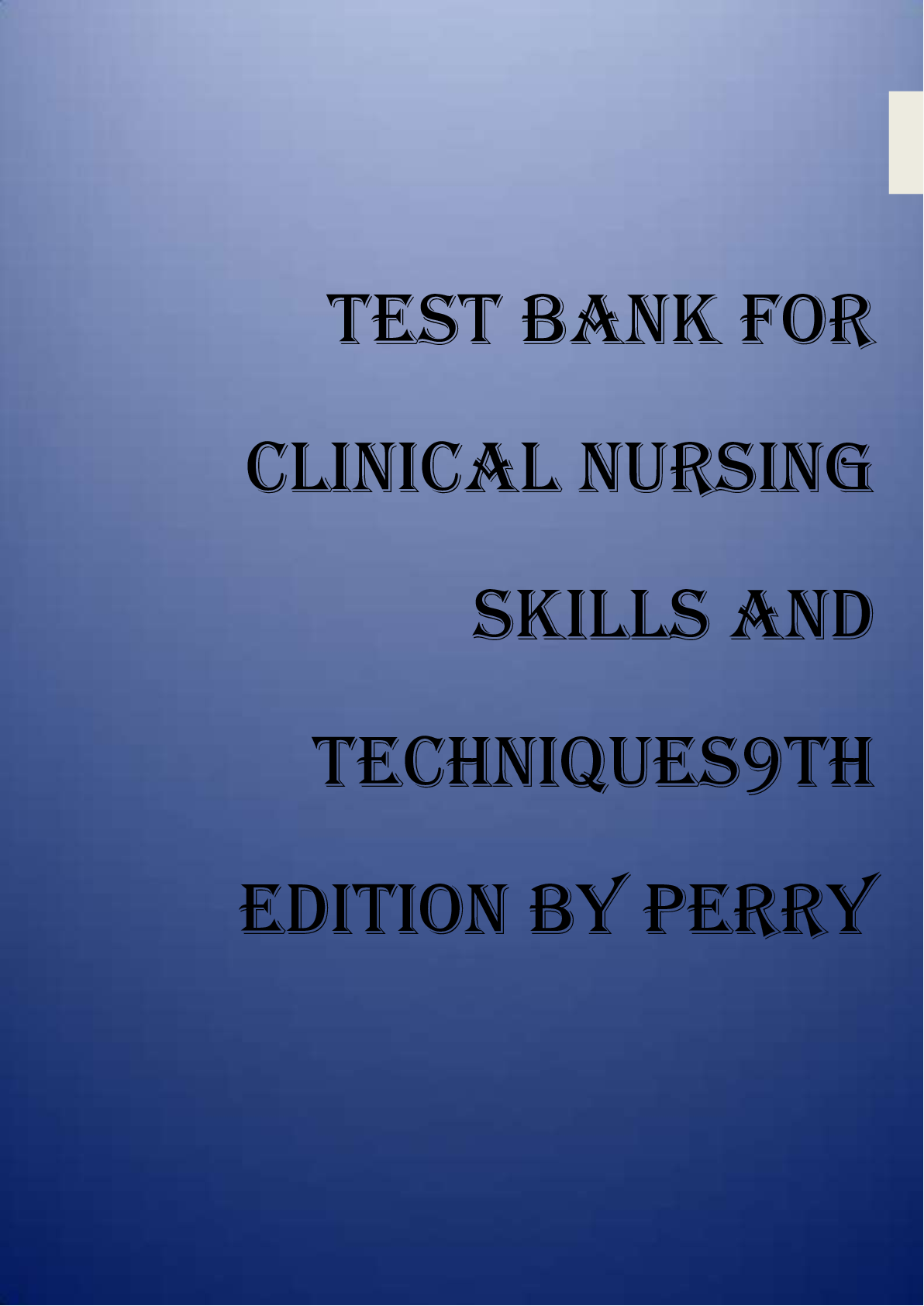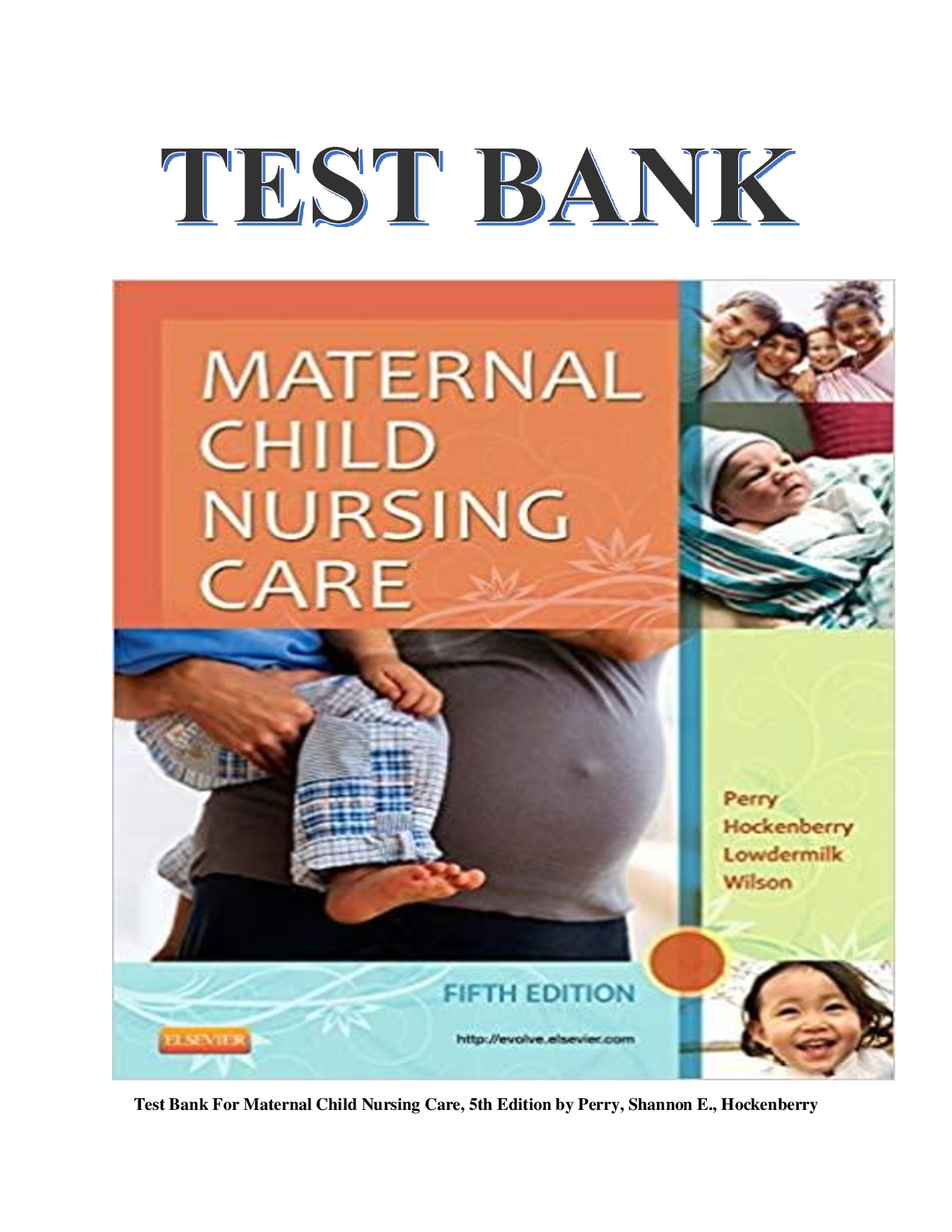*NURSING > TEST BANK > TEST BANK FOR CLINICAL NURSING SKILLS AND TECHNIQUES9TH EDITION BY PERRY (All)
TEST BANK FOR CLINICAL NURSING SKILLS AND TECHNIQUES9TH EDITION BY PERRY
Document Content and Description Below
Chapter 02: Infective Endocarditis Little: Dental Management of the Medically Compromised Patient, 9th Edition MULTIPLE CHOICE 1. Which of the following is true concerning infective endocarditis (I... E)? a. IE is always due to a bacterial infection. b. Since the advent of antibiotics, morbidity and mortality associated with IE have been virtually eliminated. c. IE is currently classified as acute or subacute, to reflect the rapidity of onset and duration. d. Accumulating evidence questions the validity of antibiotic prophylaxis in an attempt to prevent IE prior to certain invasive dental procedures. ANS: D Antibiotics have been administered before certain invasive dental procedures in an attempt to prevent infection. Of note, however, the effectiveness of such prophylaxis in humans has never been substantiated, and accumulating evidence more and more questions the validity of this practice. 2. Which of the following is currently the most common underlying condition predisposing to infective endocarditis (IE)? a. Aortic valve disease b. Rheumatic heart disease (RHD) c. Mitral valve prolapse (MVP) d. Tetralogy of Fallot ANS: C Mitral valve prolapse, which accounts for 25% to 30% of adult cases of native valve endocarditis (NVE), is now the most common underlying condition among patients who acquire IE. Previously, rheumatic heart disease (RHD) was the most common condition predisposing to endocarditis. In developed countries, however, the frequency of RHD has markedly declined over the past several decades. 3. The leading cause of death due to infective endocarditis (IE) is . a. chronic obstructive pulmonary disease b. heart failure c. pulmonary emboli d. atheromas ANS: B The most common complication of IE, and the leading cause of death, is heart failure, which results from severe valvular dysfunction. This pathologic process most commonly begins as a problem with aortic valve involvement, followed by mitral and then tricuspid valve infection. Embolization of vegetation fragments often leads to further complications, such as stroke. Myocardial infarction can occur as the result of embolism of the coronary arteries, and distal emboli can produce peripheral metastatic abscesses. [Show More]
Last updated: 3 years ago
Preview 1 out of 5 pages

Buy this document to get the full access instantly
Instant Download Access after purchase
Buy NowInstant download
We Accept:

Reviews( 0 )
$10.00
Can't find what you want? Try our AI powered Search
Document information
Connected school, study & course
About the document
Uploaded On
Jul 08, 2021
Number of pages
5
Written in
Additional information
This document has been written for:
Uploaded
Jul 08, 2021
Downloads
0
Views
8


.png)







.png)













